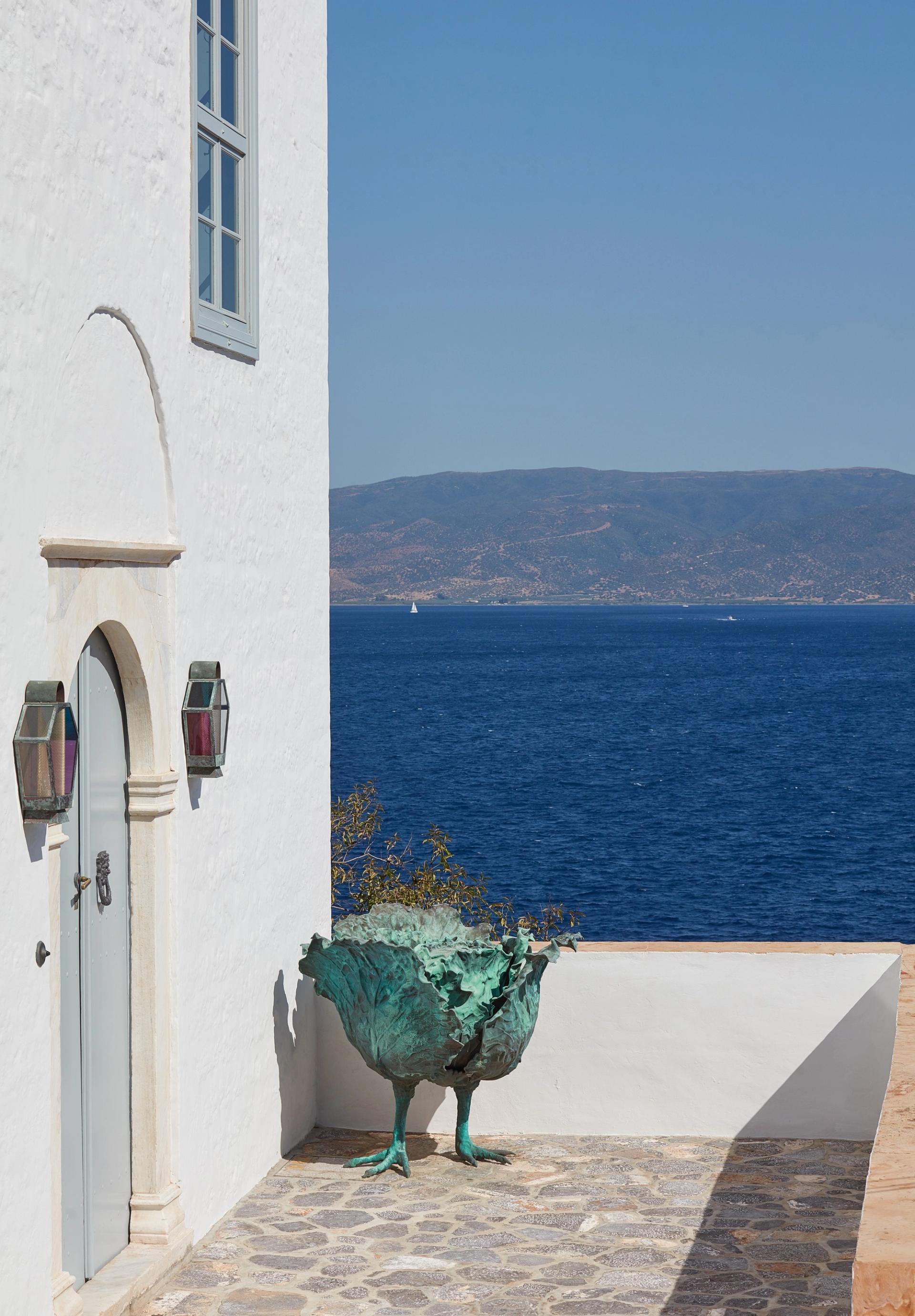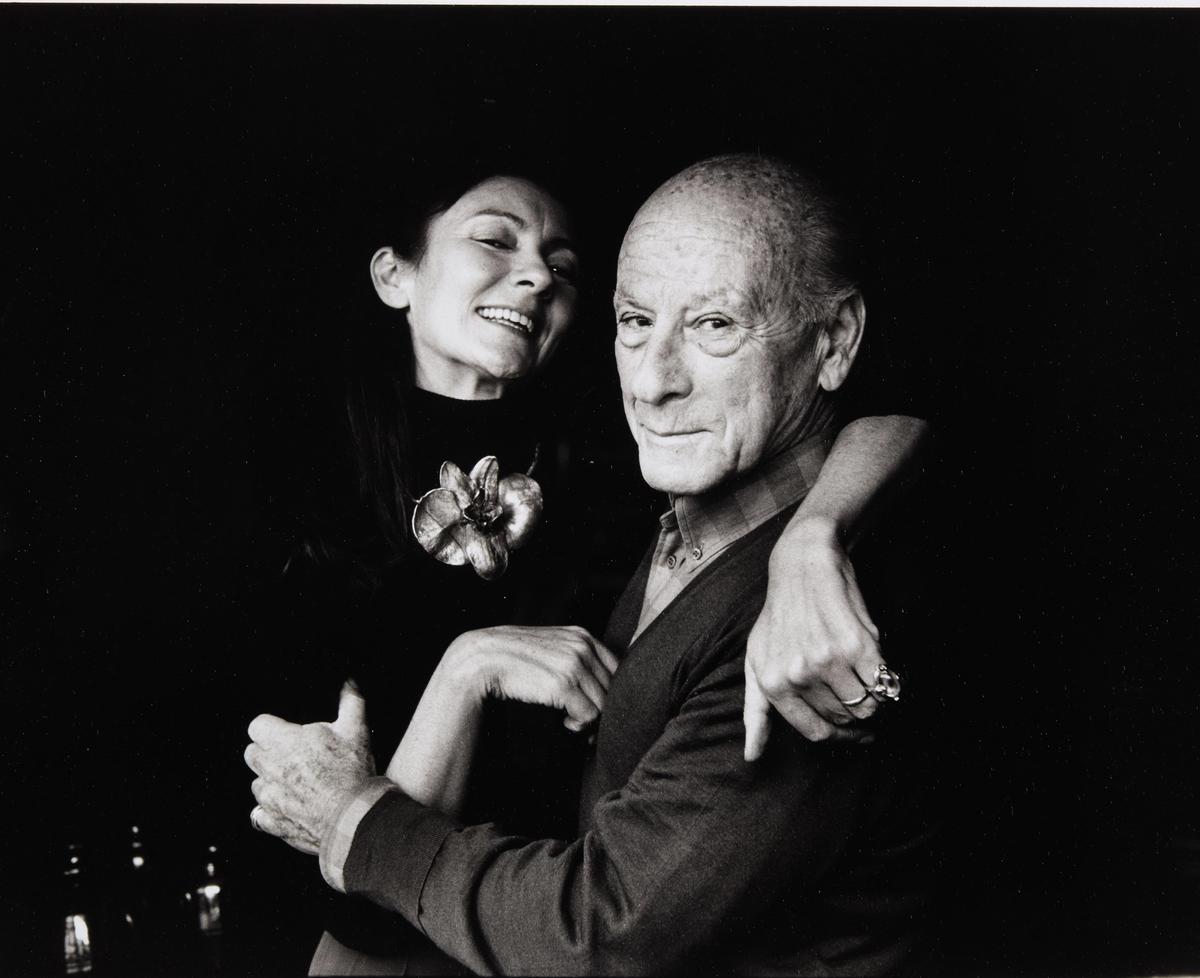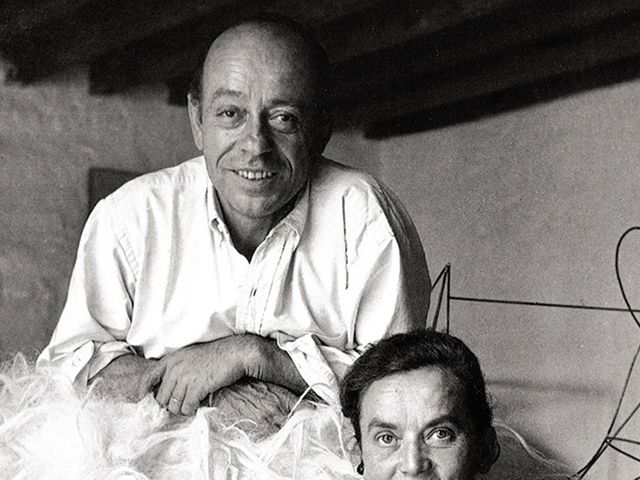“There is little required from you other than an engagement with art and guests, sunbathe, gossip and swim.” So read the itinerary sent to guests attending the annual summer meetings at the Hydra home of the British collector and patron Pauline Karpidas, who hosted the gatherings one weekend every July from 1996 until 2017.
The so-called workshops were, according to Sotheby’s European chairman Oliver Barker, a “who’s who of the contemporary art world at any given time”. Or, as Tate’s Gregoir Muir once put it, “a form of Annual General Meeting”.
Over the years, curators and museum directors such as Maria Balshaw, Nicholas Cullinan, Beatrix Ruff and Tim Marlow have attended, but, at the heart of the meetings were the artists whom Karpidas had collected and whose works adorned the family's Hydra getaway, renovated under the eye of the French designer Jacques Grange. They included Jeff Koons, John Currin, Chris Ofili, Tracey Emin, Sarah Lucas, Richard Prince, Urs Fischer and Nate Lowman.

The art world great and the good would visit the Karpidas family Hydra home every summer for a weekend of workshops and gossip. The house was sold earlier this year
Hydra became “this melting pot between great collectors and the young avant-garde”, says Barker, who was among those present at the last meeting in 2017. “It felt very edgy at the time. And I think the fact that it was not happening in a cultural hotspot, like London or New York also added frisson to it. Other art world luminaries with homes on the island include the American artist Brice Marden and the Austrian dealer Thaddaeus Ropac.
Now Sotheby’s is selling around 300 pieces from Karpidas’s Hydra collection, estimated to fetch more than €11m across two sales in Paris on 30 and 31 October. Her entire collection is thought to be worth several hundred million.
Karpidas grew up in a working-class family in Manchester. She initially went to secretarial college, but ended up setting up a small clothes shop in Athens in the 1970s. It was there she met her late husband, the Greek construction magnate Constantinos Karpidas, whose collection was more traditional and included a small group of Renoirs. With the help of the late Greek-American dealer Alexander Iolas, who is credited with discovering Andy Warhol, Karpidas began to acquire contemporary art in the early 1990s, having collected and studied Impressionist, Modern and particularly Surrealist artists. “Iolas pretty much came out of retirement to help Pauline build the collection,” Barker says.
Iolas also introduced Karpidas to the LeLannes, whom Karpidas and her husband regularly visited at their Ury home and studio, outside of Paris. “Pauline was there at the very beginning when the LeLannes didn’t have patrons, they weren’t even perceived to be artists,” Barker says. He notes a revival in today’s market for design pieces—“there’s much less distinction between contemporary art and contemporary design; design is no longer this quietly nerdy collector category”, he adds. In total, Sotheby’s is offering nine works by the LeLannes in its evening sale, with the most expensive, by Claude Lelanne—Très Grand Choupatte (2008) expected to fetch between €1m and €1.5m.
Barker acknowledges that Brexit has had an impact on business, though the decision to sell the collection in Paris and not London was chiefly down to the LeLannes’ market being unequivocally located in the French capital. “These days it’s almost immaterial where we sell; it’s no secret that these works are coming from Greece and they are going to another EU country, so, yes, it’s fairly easy logistically.” Though, with only donkeys for transport on Hydra, moving the works to Paris has been no mean feat—“ironically probably harder than Brexit”, Barker quips.
When it comes to the contemporary art in Karpidas’s collection, Sadie Coles has been pivotal. The London dealer has supported the collector’s acquisition of younger artists; as Coles puts it: though buying artists at the start of their careers is “more high risk than blue-chip options […] it gives her pleasure and stimulation, and she is extremely savvy about the choices she makes”.
Indeed, Karpidas was often the first to acquire works by many of the artists she collects. As Barker says: “She would be the first to admit that she didn't necessarily have the financial means to buy Koons when he was a $10m artist but she could when he was a $1m or $2m dollar artist.”
Karpidas was an early champion of the YBAs. In 1997, for her second ever Hydra gathering, she hosted a mini-YBA show. Barker notes how Karpidas and one or two others including Janet de Botton “had ringside seats to what was going on in London in the early 1990s”. He adds: “Many of the artists really sought her out; Damian [Hirst] probably spearheaded this. They knew the principal collectors at the time and made a beeline for them to come and see their shows.”
Among the works being sold at Sotheby’s evening sale are Damien Hirst’s Wretched War (2004; est. €100,000-€150,000); while a work on paper by Tracey Emin (approximate est. $4,000-$6,000) and four photographic works by Sarah Lucas (approximate estimates range from $5,000 to $9,000) are in the day sale.



